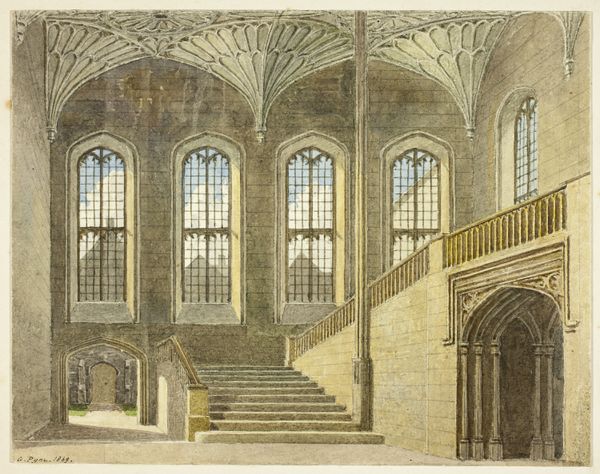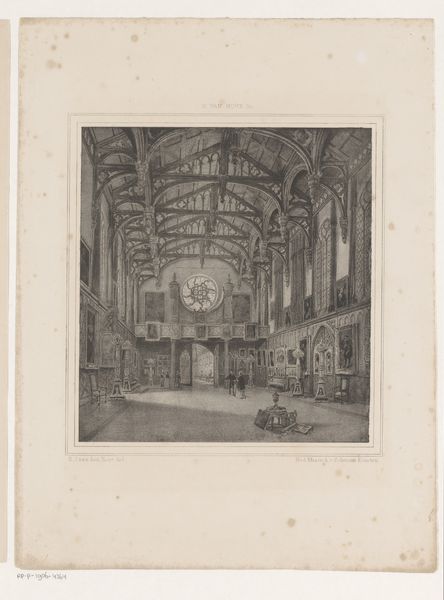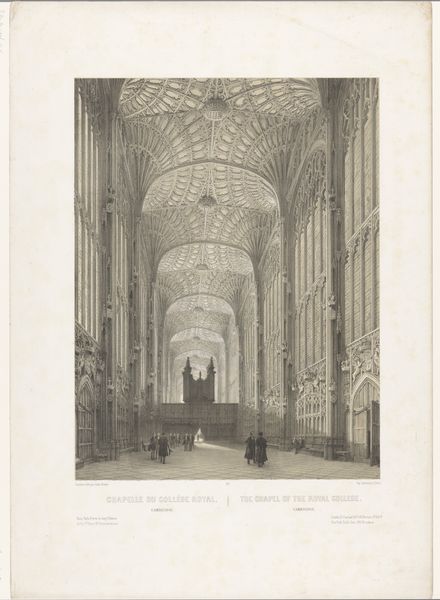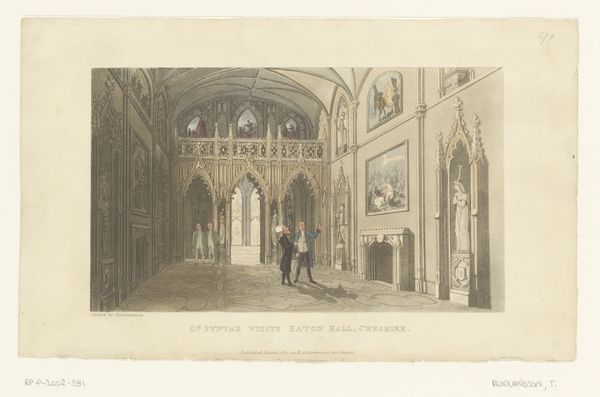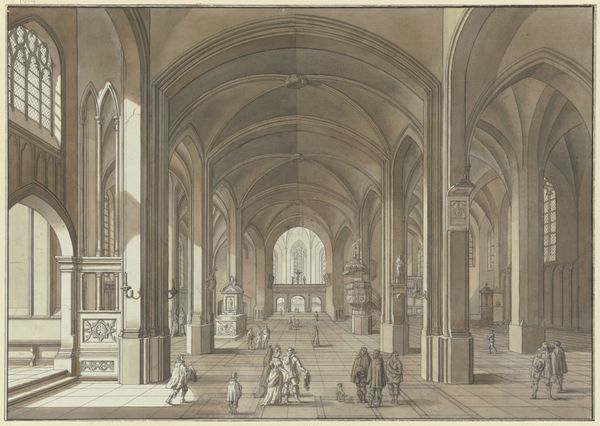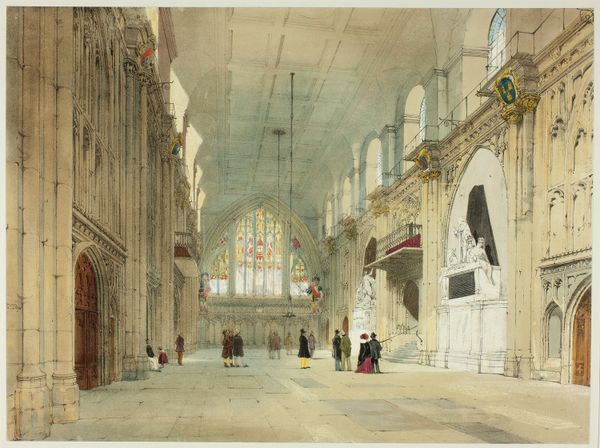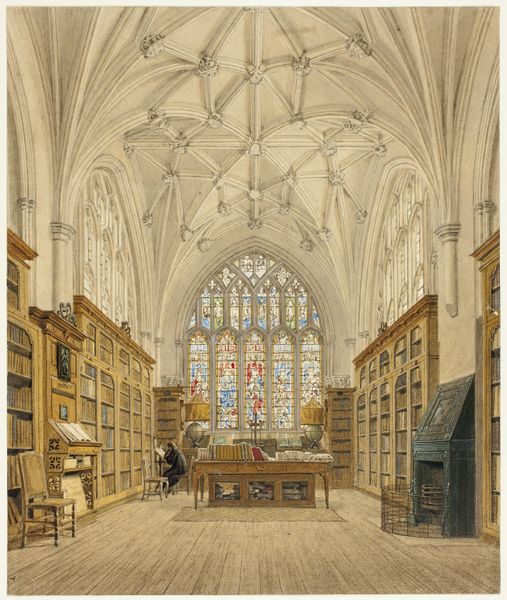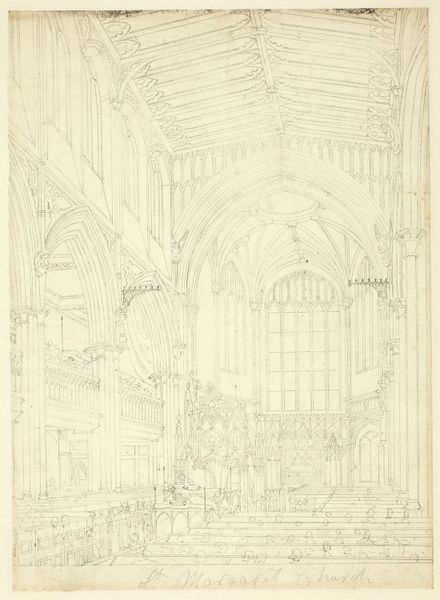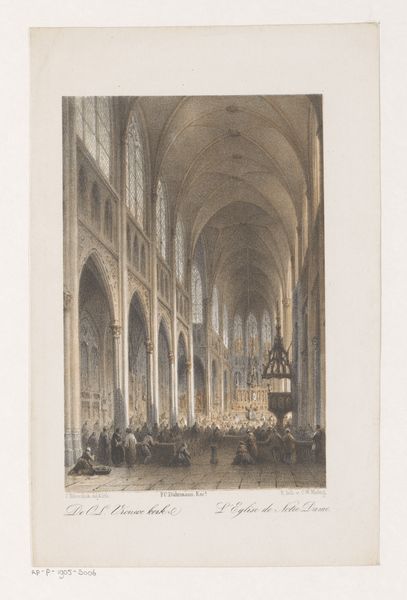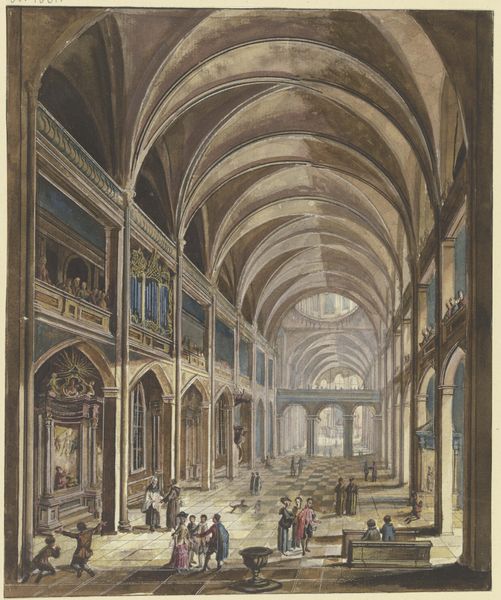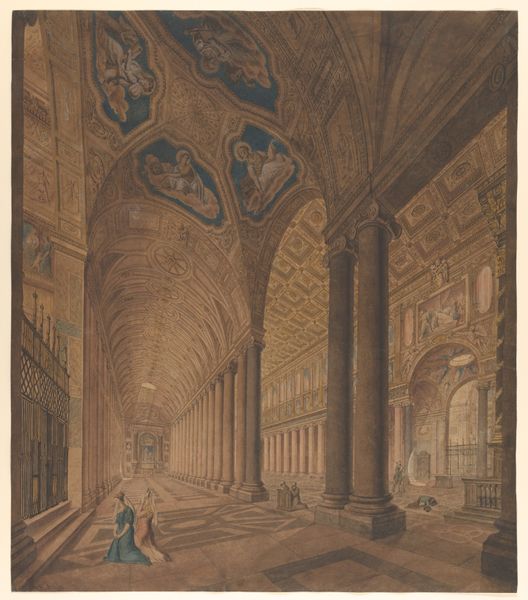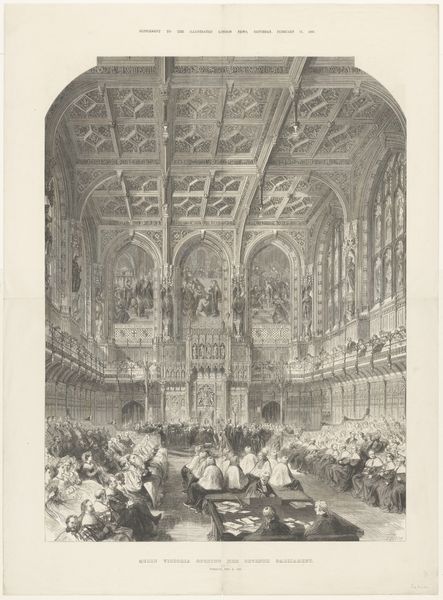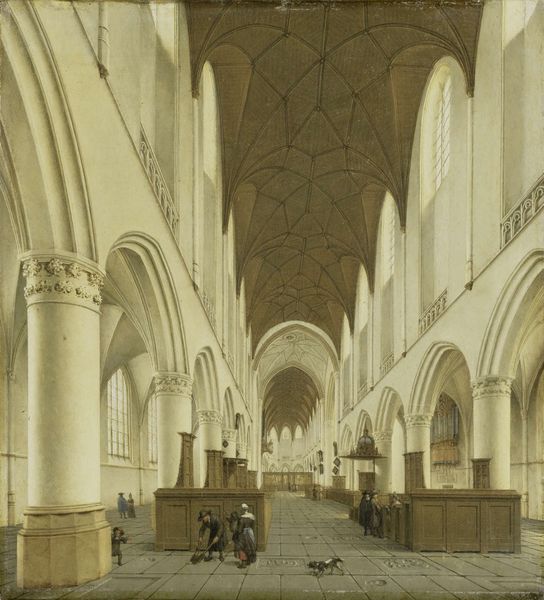
Guildhall, London: The Great Hall, Facing East 1859 - 1869
0:00
0:00
Dimensions: image (peaked at top): 26 1/4 x 18 in. (66.7 x 45.7 cm) sheet: 16 1/2 x 18 1/2 in. (41.9 x 47 cm)
Copyright: Public Domain
Curator: This is Sir Horace Jones's rendering of "Guildhall, London: The Great Hall, Facing East," completed sometime between 1859 and 1869, now held at The Metropolitan Museum of Art. Note Jones's choice of media; he has combined ink, watercolor, and drawing techniques in this print. Editor: It’s breathtaking, this hall. The muted palette softens the grandeur, yet it's still undeniably imposing, particularly the soaring hammerbeam roof. I can almost hear the echoes. Curator: The Guildhall has served various public functions throughout its history. This image offers us a glimpse into its continuing role as a civic space, albeit from a distinctly Victorian perspective. Editor: And a privileged perspective, judging by the style and dress of the people included. This isn't just about the architecture; it's about the society that occupies and is shaped by it. What’s interesting is what this image, which looks ostensibly like a neutral record of architectural fact, is doing to justify the space. It seems that it is showcasing the history, tradition, and power of London's merchant class at that time. Curator: Precisely. The romanticized depiction lends itself to a particular vision of British civic identity being projected outward. The image was likely circulated and viewed beyond the immediate location of the hall, playing a role in shaping perceptions of London and its governance. Editor: It really underscores how spaces like these, memorialized and reproduced in art, become symbolic stages where power is not only enacted but also visually consolidated and transmitted across generations. The print doesn’t offer a pure depiction, but functions almost like an instrument of urban policy that helped promote that place as somewhere vital and worth caring about. Curator: Absolutely. Looking at architectural depictions from a historical distance provides insight into the motivations of both the artist and the society that commissioned or consumed such work. Editor: Considering its subtle washes and grandiose details, this drawing presents a fascinating interplay between the built environment and the social dynamics it cradles. Curator: Indeed, it reminds us of the intricate ways in which architecture is never merely about structure, but also about power, identity, and representation. Editor: Very well said, I’ll be contemplating those intersecting layers within this serene cityscape, and hoping it promotes a discussion on art, architecture and its role within the community!
Comments
No comments
Be the first to comment and join the conversation on the ultimate creative platform.
